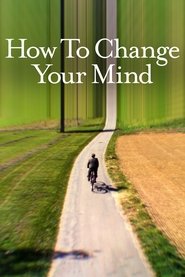

Seasons and episodes
1Season 1 Jul. 12, 2022
 1 - AllS01 Ep(1-4) Jul. 12, 2022
1 - AllS01 Ep(1-4) Jul. 12, 2022
Video trailer
Synopsis
How to Change Your Mind Season 1 Download In English Hindi 1080p 720p 480p
StoryLine:
Michael Pollan’s 2018 tour of psychedelics, “How to Change Your Mind: What the New Science of Psychedelics Teaches Us About Consciousness, Dying, Addiction, Depression, and Transcendence,” was a revelatory hit, marking the author’s turn from botany and nutrition toward an unlikelier fascination: psychedelic drugs. He wanted to know what they do to us, and in particular, what healing uses they might offer.How to Change Your Mind Season 1 Download.
The book’s Netflix adaptation of the same name (available starting July 12) streamlines Pollan’s topics and arguments for the screen by pairing archival clips with original footage and animated graphics. Directed by Lucy Walker and Alison Ellwood — and with Alex Gibney as an executive producer — the series is divided into four parts, each running at roughly an hour: LSD, psilocybin, MDMA, and mescaline. There is something oversimplified about this TV version of “How to Change Your Mind,” as if its knowledge has been run through a sieve. But worthy pieces of insight still fleck the episodes.
Pollan anchors the series as our guide, offering talking-head testimony that flows into a running stream of voice-over commentary. The risk to this approach is that the narration, swathing the series like a layer of papier-mâché, can blend into inanities. Pollan frequently uses terms like “consciousness” and “the mind,” but never stops to untangle their complex meanings. “One of the things that psychedelics do is reveal all sorts of secrets about consciousness, which is the biggest mystery of all,” Pollan says at one point in an observation so spacey it could be lifted from a laser light show.The series is most cogent in laying out the history of psychedelics. LSD was synthesized by chance at a Swiss pharmaceutical company, where a chemist accidentally tripped on his creation.
Additional Links:
Original title
How to Change Your Mind
First air date
Jul. 12, 2022
Seasons
1
Episodes
4
Average Duration
50 minutes

















